If your Windows 10 desktop or laptop suddenly lost the network connection and showed limited connectivity, here are the simple steps to fix it.
In this case, the Wi-Fi or Wired network can go offline and not be able to connect to the local network. It will impact the Internet and other network activities.
The below steps show how to fix the limited Wi-Fi connectivity issue in Windows 10, which also applies to the wired network.
If the Windows 10 network shows limited connectivity, the network adapter would not have an IP from the DHCP. If only one particular PC faces this issue at your work/home network, then apparently nothing is wrong with the network setup or DHCP server.
The particular Windows 10 laptop or desktop has some issues with the network adapter. When I encountered the same issue in my organization, the following steps helped me to solve it.
This problem is not specifically for the Wireless network adapter; it can also happen to your LAN wired network adapter. It’s an issue with the IP stack (IPv4 or IPv6 – based on which protocol you are using). Even though few solutions are suggested online, let me start with the possible (which worked for me straight away) solution, then other methods.
Updating or re-installing the WiFi adapter driver could solve some of the issues. But the limited connectivity issue in Windows 10/8.1 could be connected to IP address/DHCP. In this case, the network adapter will not get an IP address; hence it will be getting an APIPA address range, something like 169.245.x.x, which means you are in trouble.
The Solution for Limited Connectivity Wi-Fi on Windows 10
As described earlier, this is due to the IP address/IP stack problem, which can be resolved by resetting the TCP/IP stack to its default value. TCP/IP is a protocol used in most computers (including Mac, Linux, and Windows) and other network devices to communicate in LAN or WAN.
Use the NetShell utility (netsh.exe) command to perform the task.
1) Open the command prompt as Administrator. Search ‘cmd’ and right-click on cmd, then select ‘Run as administrator’ as below.
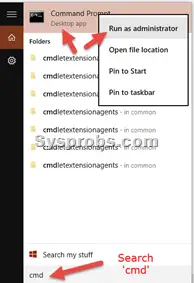
2) Type the following commands –
netsh winsock reset catalog (Reset WINSOCK entries to installation defaults)
netsh int ipv4 reset reset.log (Reset IPv4 TCP/IP stack to installation defaults)
Source
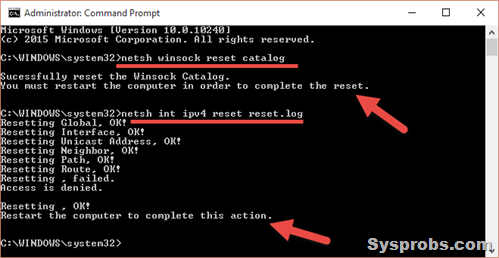
3) Reboot the computer.
The Problem:
One of the above reset commands removes all persistent static route entries from the Windows 10/11 computer. I faced this issue and had to add those static routes again by the ‘route add’ command.
This will mostly solve the problem of a limited Wi-Fi connectivity issue in Windows 10 or 8.1.
4) If you still face the problem and your laptop can’t connect to the Internet and other local network resources, continue the below steps.
The following few more netsh commands may fix the problem. Ensure you enter the below commands in the command prompt, which was opened as Administrator.
netsh int tcp set heuristics disabled
netsh int tcp set global autotuninglevel=disabled
netsh int tcp set global rss=enabled
I’m sure one of the above commands will fix the issue and make your Windows 10 network faster.
5) If your wired network is fine, but you are having trouble in the wireless network only, change the power options to wake up the WiFi Adapter.
Right-click on the WiFi adapter and select Properties.
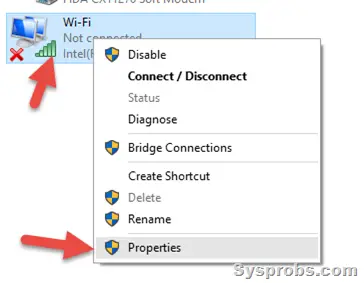
Click on ‘Configure’.
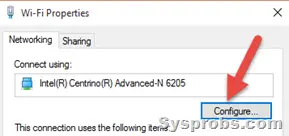
In the ‘Power Management’ tab, uncheck the below option.
This will prevent Windows 10 from turning off the WiFi adapter during sleep or hibernation. Because when the laptop resumes sleep, the WiFi adapter may not wake up and work properly. Avoiding this built-in feature may help with proper wireless network connectivity in Windows 10.
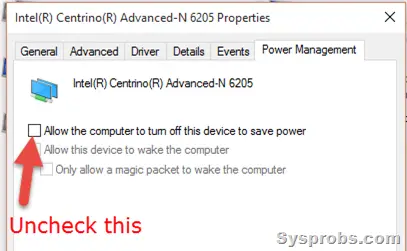
6) As discussed here, having a 3rd party antivirus and personal firewall software such as BitDefender can also disturb the network connectivity in Windows 10/8.1.
Suppose none of the above solutions works, and you have a dedicated Antivirus software with a firewall enabled. In this case, you can uninstall it or find a way to allow Internet connectivity and IP requests in the firewall settings. It might help.
The below video explains how to reset Wi-Fi settings to default in Windows 10.
The latest Windows (with updates) and drivers, especially for Wi-Fi and LAN adapters, may not create limited WiFi connectivity or Windows 10 not getting IP address issues.


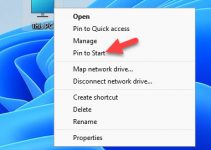



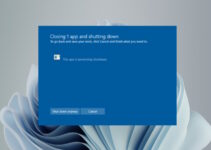
Bloody brilliant! The first fix worked for me, thanks so much for sharing. In 25+ in the industry, that was a new one.
Wow.. thanks heaps!
Worked first shot.
Legend 🙂
Tried all steps, still can’t get an IP addr. Good tries tho, some I’ve never heard of. When I plug into my router, it keeps saying “Unidentified Network”. I plug the same wire (from same port on router) into another PC, works fine. I’ve tried all the ipconfig/netsh/net cmds, Registry hacks, etc. to refresh winsock, IPv4, DNS, etc.
I have the same problem but a lenovo device on a domain, did you manage to find a fix as yet ?
Excellent solution. Simple and easy.
Thanks for the tip. It saved me a lot of time.
Thanks… Excellent >>>>>>>
Excelent!!
Great work!!
The first fix is worked flor me.
Greetings from chile 🇨🇱!!
It wouldnt work for me but what did was setting the ipv4 ip and gateway manually. Only problem is if you carry your laptop to diffrent places you will have to reasign a new ip bassed on the new connections gateway ip
The solution it is work but problem again repeating a lot of time later.
I wanna f*ck microsof*ck
Thanks so much…. I have been struggling with this for days…. The first solu worked for me.
That is life savior, after hours of struggle first solution worked for me. Thanks a ton !
And another happy user. First solution helped right away.
Thanks for sharing.
This is wonderful information. These commands worked for me:
netsh int tcp set heuristics disabled
netsh int tcp set global autotuninglevel=disabled
netsh int tcp set global rss=enabled
work like a magic!!! thank u so much :))))
Excellent. Worked first step.
Did not work for me either. If I assigned a static IP address then is the only way it works. For some reason DHCP is not assigning IP address. Either it can not find the DHCP or process is going to La La Land while assigning IP address. I will keep researching. If someone has the solution, please post it. Thanks
I have the same issue. It started after windows creators update. I can’t even try to update the driver on my wifi adapter. Tried everything here, plus some, and nothing has worked.
Abu , switch off windows firewall and then restart your dhcp client
I took the computer to the Geek Squad. They determined Windows was corrupt. They tried to reset it, and that didn’t work either. Finally just reinstalled Windows 10, and everything finally works.
after a general power interruption, the devices connected to our lan get randomly and occasionally a wrong IP (192.168.0.xxx instead of 192.168.1.xxx); some say that there could be a ‘rogue’ DHCP server interfering with the router’s DHCP service but so far i havn’t been able to figure it out. At least, it works for us to assign a fixed IP to a disconnected device, but it’s only a temp solution.
Than you very much! Worked like a charme!
Does not work. Windows is a piece of crap. I run Linux but my neighbor keeps to invite me to “repair my Internet”. I’m just very angry as I have already spent 3 hours finding some solution.
netsh winsock reset catalog (Reset WINSOCK entries to installation defaults)
netsh int ipv4 reset reset.log (Reset IPv4 TCP/IP stack to installation defaults)
Worked fine for me because after Win 10 installation I got no network connection before, except if I set WLAN and LAN to manual IP’s.
I had been running ipconfig /release – ipconfig /renew after moving to a different AP during so long. Now this has fixed it. Thank you!!!
Worked for me on my laptop
Thanks a lot !!
DHCP got stuck, kept my old default GW but assigned an apipa address. Manual IP worked, ipcofig /release didn’t dolve it, removing and adding tcp/ip stack didn’t solve it, removing the adapter didn’t solve it.
netsh winsock reset catalog
netsh int ipv4 reset reset.log
and now all is well. Great post ! Thanks!
I had this issue too and the first 2 commands didn’t work. Before trying the other 3 I decided to try something else. I set static IPs for both of my adapters, connected to the network, then I removed the static IPs, and out of nowhere DHCP started working again.
Wow. This solution was a godsend! I was pulling my hair out because of this. Thank you!
Thanks